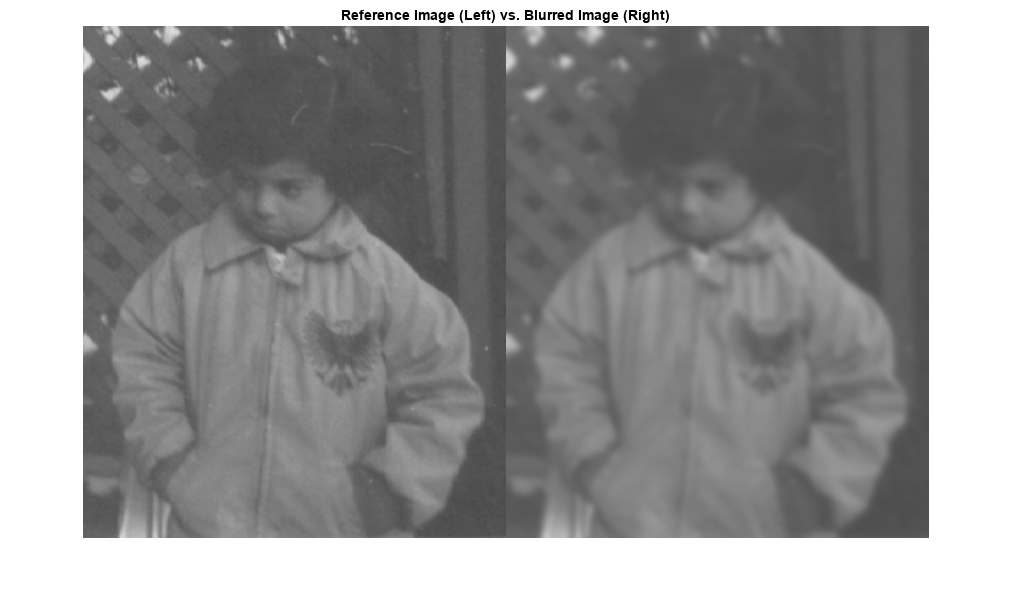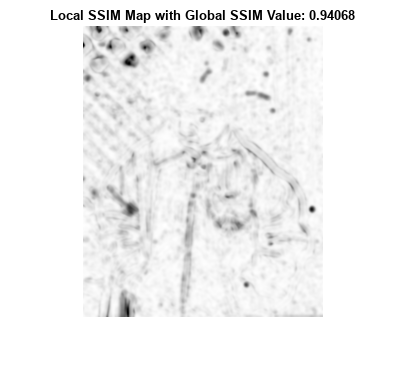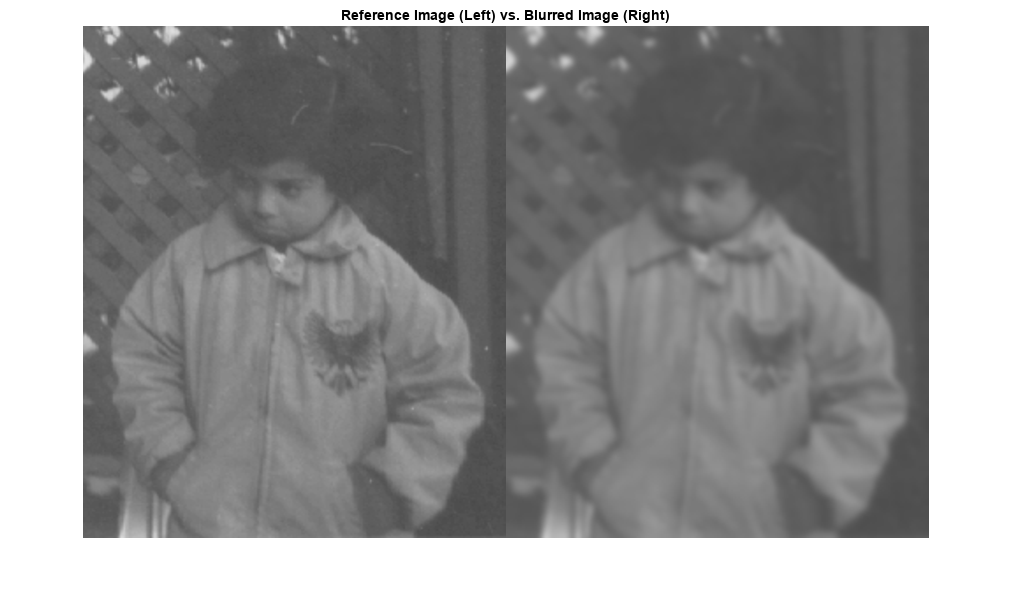ssim
영상 품질을 측정하는 구조적 유사도(SSIM) 지수
설명
예제
입력 인수
이름-값 인수
출력 인수
세부 정보
팁
알고리즘
SSIM 지수 품질 평가 지수는 3개의 항, 즉 휘도 항, 대비 항, 구조 항의 계산을 기반으로 합니다. 전체 지수는 3개 항의 곱셈 조합입니다.
여기서
이 경우, μx, μy, σx,σy, σxy는 영상 x, y의 국소 평균, 표준편차, 교차공분산입니다. α = β = γ = 1(Exponents의 디폴트 값), C3 = C2/2(C3의 디폴트 선택값)이면 SSIM이 다음과 같이 단순화됩니다.
"Exponents"에 대해 정수가 아닌 값을 지정할 경우 ssim 함수는 중간 휘도 항, 대비 항, 구조 항을 [0, inf] 범위로 고정하여 복소수 값의 출력값을 방지합니다.
참고 문헌
[1] Zhou, W., A. C. Bovik, H. R. Sheikh, and E. P. Simoncelli. "Image Quality Assessment: From Error Visibility to Structural Similarity." IEEE Transactions on Image Processing. Vol. 13, Issue 4, April 2004, pp. 600–612.
확장 기능
버전 내역
R2014a에 개발됨참고 항목
psnr | immse | multissim | multissim3
도움말 항목
- 다양한 압축 수준의 영상 품질 비교하기
- List of Functions with dlarray Support (Deep Learning Toolbox)
- 사용자 지정 훈련 루프, 손실 함수 및 신경망 정의 (Deep Learning Toolbox)


